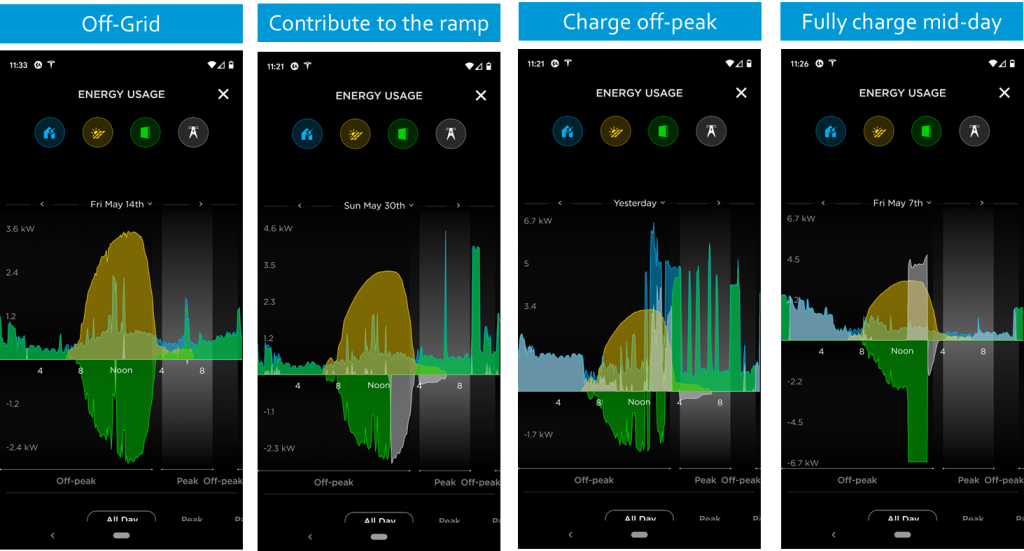Does Residential Battery Storage Help the Grid?

Posted on by Josh Bode
The first plot is a very good outcome. It shows no grid usage. The home (blue) is exclusively being powered by battery storage (green) and solar (orange). This pattern happens fairly often in the spring when household energy consumption is low and solar production is high. It also means no grid exports, even if the grid needs additional resources. The second case – contributing to the ramp – is disturbingly common. The battery starts charging as soon as the sun is up and is fully charged around mid-day, at which point, all of the solar comes online all at once. From a grid standpoint, it’s contributing to the ramps and is not helping absorb surplus solar. The last two scenarios are less common. The third plot shows some use during off-peak hours (I was charging a electric car), my intentional draw from the grid immediately before the 4-9 pm period, and use of the battery throughout that peak window (with a small amount of exports). It was also a very hot day. You see my AC unit cycling on and off. The last plot shows the full capability of the battery, close to 7 kW, which is rarely seen. The battery went into storm mode and drew power from the grid rather than charge only using the rooftop solar. When operated in default mode, the battery will almost never charge or discharge at its full capability. It means that behind-the-meter batteries are an under-utilized, untapped resource during periods from the grid needs resources the most and during period with excess generation on the grid.
If left to operate on their own, the batteries typically charge as soon as the sun comes up (the wrong time from a grid perspective), often don’t absorb surplus generation, and rarely, if ever, export to the grid when resources are needed most. By design, they operate with the customer in mind, which is an excellent objective. However, it is possible to lower customer bills, provide backup power, and also improve operations for the grid. As saying goes, “we can walk and chew gum at the same time.”
Why does this matter? Behind the meter battery storage is a growing, untapped resource, and the need for flexible, predictable resources is growing. The below plot shows the growth in residential behind-the-meter battery storage in California. There are currently about 400 MW, but the magnitude of growing quickly. Roughly 8-10% of new solar installations are also install battery storage at the same time. And the share of solar sites electing battery storage is growing. What can be done to tap into this under-utilized resource? Clearly, it is not enough to have the batteries installed. It is necessary to operate them at the right times and to provide customers incentives to do so.
- A virtual power plant study with over 1,000 residential batteries. The batteries are providing grid response based on day-ahead market prices (after a strike price is hit) and in response to system operator alerts, warnings, and emergencies.
- A battery storage pilot. Perhaps the most exciting part of the pilot is that we are using a randomized control trial to explicitly test how different incentive levels and incentive structures affect customer willingness to allow utilities to operate the battery for grid needs. In addition, we are testing daily operations with day-ahead market prices and time-of-use rates, and testing how to modify dispatch algorithms so behind the meter batteries can deliver a predictable, incremental resource. The pilot includes two tracks: one for customers with existing battery storage and for customers who are in the process of installing solar and/or battery storage (another sites). DSA is in charge of all aspects of the turn-key pilot including design, recruitment, event operations, communication with the batteries (or more accurately, the battery API), setting up data tracking and collection databases, and evaluation. (Click the link for a presentation of battery pilot design: Battery Storage Pilot Design )
- Programming a utility-scale battery to maximize load relief and demand charges for coops
- Identifying high-value locations for distribution connected battery storage.
- Assessing economic feasibility of utility-owned battery storage operated in response to market prices and T&D needs.

